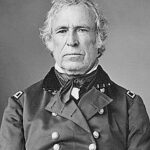The Bold Presidential Decision
President Zachary Taylor’s support for California direct admission represented remarkable political courage in 1849. The Gold Rush had swelled California’s population beyond 100,000 residents. Taylor recognized that bypassing territorial status would avoid prolonged congressional battles over slavery. This pragmatic approach respected the democratic will of Californians who had already drafted a free-state constitution.
Strategic Political Maneuvering
Taylor’s decision demonstrated exceptional leadership during America’s most divisive period. 📊 California’s rapid population growth made traditional territorial governance impractical. The president understood that direct statehood would prevent pro-slavery forces from influencing territorial legislatures. His military background taught him to act decisively when circumstances demanded swift action.
Respecting Popular Sovereignty
The California direct admission strategy honored democratic principles while advancing national interests. ⚖️ Californians had overwhelmingly chosen to prohibit slavery in their proposed constitution. Taylor believed federal intervention would undermine local self-governance. This approach balanced sectional tensions with constitutional respect for state formation processes.
Impact:
Immediate Constitutional Consequences
Taylor’s support for California direct admission fundamentally altered the national slavery debate. The decision bypassed congressional territorial oversight entirely. 🔥 Southern politicians condemned this precedent as unconstitutional federal overreach. Northern abolitionists praised Taylor’s commitment to preventing slavery expansion. The controversy intensified sectional divisions leading toward the Compromise of 1850.
Long-term Democratic Precedents
The California direct admission established important precedents for future state formation. Taylor proved that rapid statehood could work when populations justified immediate governance. 🌍 This approach influenced later western territorial organization and statehood processes. The decision demonstrated how executive leadership could shape constitutional development during national crises.
Economic and Social Transformation
California’s swift admission as a free state accelerated western economic development significantly. 💰 The Gold Rush economy required stable governmental institutions that territorial status couldn’t provide. Free labor policies attracted diverse immigrant populations to California. The decision helped establish the West as a region of economic opportunity rather than plantation agriculture expansion.
